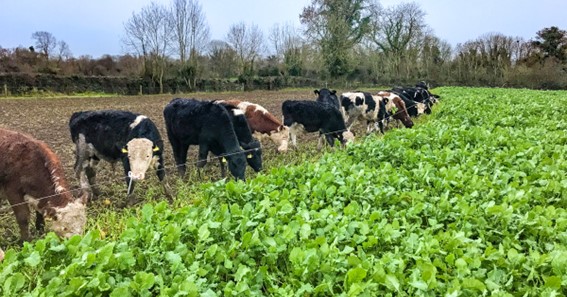Are you curious to know what is fodder crops? You have come to the right place as I am going to tell you everything about fodder crops in a very simple explanation. Without further discussion let’s begin to know what is fodder crops?
In the world of agriculture and animal husbandry, the term “fodder crops” holds significant importance. Fodder crops are cultivated specifically to provide nourishment to livestock, ensuring their health and productivity. These crops play a crucial role in sustaining agriculture by supporting the rearing of animals, which, in turn, contributes to food security and rural livelihoods. In this blog, we will explore the concept of fodder crops, their types, and their invaluable role in the agricultural ecosystem.
What Is Fodder Crops?
Fodder crops are cultivated plants grown primarily to be used as animal feed. They are rich sources of nutrients and offer essential proteins, carbohydrates, vitamins, and minerals that are vital for the well-being and productivity of farm animals, such as cattle, sheep, goats, and buffaloes.
Types Of Fodder Crops
- Grass Fodder Crops: These include various species of grasses like Napier grass, Bermuda grass, Guinea grass, and Rhodes grass. Grasses are the most common fodder crops due to their rapid growth and high nutritive value.
- Leguminous Fodder Crops: Legumes like alfalfa, clover, and berseem are rich in protein and fix atmospheric nitrogen, enriching the soil and enhancing crop rotation.
- Cereal Fodder Crops: Cereal crops such as maize, sorghum, and millets are used as green fodder or as silage, providing a nutritious source of feed during lean periods.
- Root Fodder Crops: Root crops like fodder beets and turnips are used as supplementary feed during winters when fresh green fodder is scarce.
Importance Of Fodder Crops
- Livestock Nutrition: Fodder crops supply essential nutrients required for livestock growth, milk production, and reproduction, leading to healthier and more productive animals.
- Food Security: Fodder crops are crucial in meeting the dietary needs of livestock, which, in turn, contribute to the production of milk, meat, and other animal-based products for human consumption.
- Sustainable Agriculture: Growing fodder crops promotes sustainable agriculture by incorporating crop rotation, improving soil fertility through nitrogen fixation, and enhancing biodiversity.
- Income Generation: Fodder crops offer an additional income stream for farmers through the sale of surplus fodder to other livestock keepers.
Fodder Conservation Methods
- Haymaking: Fodder crops are cut and dried in the field to make hay, which can be stored and fed to animals during the non-growing season.
- Silage Making: Fodder crops are ensiled in airtight containers, preserving their nutrient content, and providing a year-round supply of feed.
- Green Fodder: Freshly harvested fodder is directly fed to animals, offering a quick and easily digestible source of nutrition.
Conclusion
Fodder crops are the lifeline of animal husbandry, sustaining the health and productivity of livestock and ensuring food security for millions of people. These crops not only provide essential nutrients to farm animals but also contribute to the sustainable management of agricultural land. Fodder conservation methods, such as haymaking and silage making, ensure a steady supply of feed even during adverse weather conditions. As agriculture evolves to meet the growing demands of a burgeoning population, the significance of fodder crops in ensuring the well-being of livestock and enhancing rural livelihoods remains undeniable. By nurturing these valuable crops, farmers continue to nourish their animals and contribute to a thriving and sustainable agricultural ecosystem.
FAQ
What Is A Fodder Crop?
Farmers grow fodder crops in addition to cattle rearing. Fodder crops are those crops which are grown primarily as food for animals. Maize, corn and hay are some fodder crops. The waste material obtained after processing sugar beet is also used as animal feed.
What Are The Examples Of Fodder Crops?
Fodder crops are those crops which are grown primarily as food for animals. Maize, wheat, rye and hay are some fodder crops.
Why Is It Called Fodder?
From Middle English fodder, foder, from Old English fōdor (“feed; fodder”), from Proto-West Germanic *fōdr, from Proto-Germanic *fōdrą, from *fōdô (“food”), from Proto-Indo-European *peh₂- (“to guard, graze, feed”).
What Is Forage Or Fodder Crop?
Fodder primarily refers to crops harvested and used for stall feeding. Forage is defined as fresh or preserved vegetative matter used as animal feed. Forage crops include grasses, legumes, crucifers, and other crops grown for hay, pasture, fodder, and silage.
I Have Covered All The Following Queries And Topics In The Above Article
What Is Fodder Crops Give Example
What Is The Meaning Of Fodder Crops
What Is Fodder Crops Class 9
What Is Mean By Fodder Crops
What Are Fodder Crops Examples
5 Importance Of Fodder Crops
Fodder Crops Pdf
What Are Fodder Crops Give Examples
Legume Fodder Crops Examples
Fodder Production In India
Fodder Crops In Hindi
Fodder Crops In India
What Is Fodder Crops
What are 3 examples of fodder crops
What are some examples of fodder crops?
